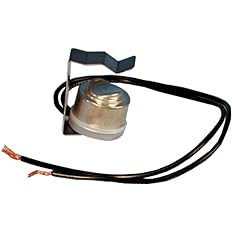My replacement sump pump controller just failed again. First time it failed was coincident with a lightning strike nearby. When I contacted the manufacturer to return for warranty repair, they just sent me a new unit. Being a chronic pack rat I just kept the broken unit for spare parts.
I decided to open up the old first failed controller to look for something obvious... Ding, ding, ding... an old school 2n4403 (GP PNP) was shorted collector to base. I figure this was driving the relay coil and being shorted is consistent with controller relay being stuck always on... Kind of like my recent failure.
I was a little surprised that I couldn't find a 2n4403 in my back lab, I used them back in the day. My lab is populated with parts from a few decades ago,,, but I did find my bag of MPSA56 a GP PNP bipolar I standardized on, like a 2N4403, or 2N3906 just with higher breakdown voltage and better specs than the 4403.
In no great surprise it is now fixed and appears to be working properly... I even hear the 10 sec delay for the relay to disengage. This design uses a 555 timer to generate the 10 second delayed off, so cutting edge design for 40-50 years ago.
JR
I decided to open up the old first failed controller to look for something obvious... Ding, ding, ding... an old school 2n4403 (GP PNP) was shorted collector to base. I figure this was driving the relay coil and being shorted is consistent with controller relay being stuck always on... Kind of like my recent failure.
I was a little surprised that I couldn't find a 2n4403 in my back lab, I used them back in the day. My lab is populated with parts from a few decades ago,,, but I did find my bag of MPSA56 a GP PNP bipolar I standardized on, like a 2N4403, or 2N3906 just with higher breakdown voltage and better specs than the 4403.
In no great surprise it is now fixed and appears to be working properly... I even hear the 10 sec delay for the relay to disengage. This design uses a 555 timer to generate the 10 second delayed off, so cutting edge design for 40-50 years ago.
JR




![Electronics Soldering Iron Kit, [Upgraded] Soldering Iron 110V 90W LCD Digital Portable Soldering Kit 180-480℃(356-896℉), Welding Tool with ON/OFF Switch, Auto-sleep, Thermostatic Design](https://m.media-amazon.com/images/I/41gRDnlyfJS._SL500_.jpg)


















